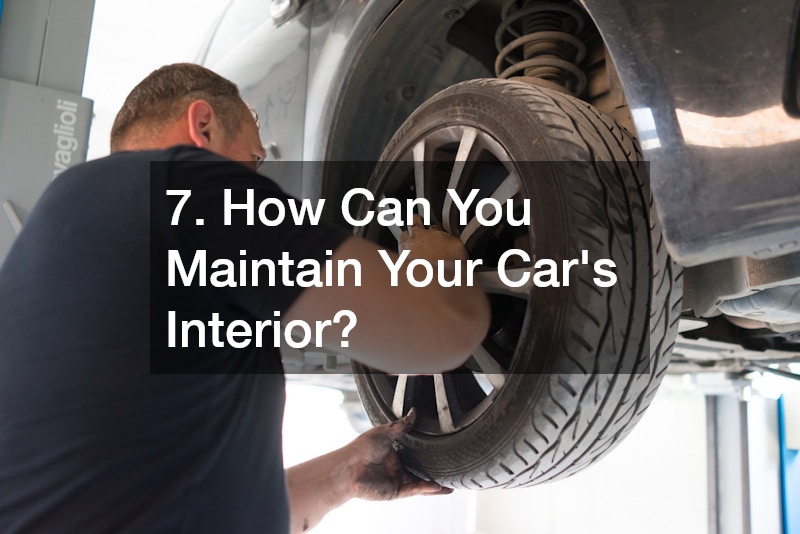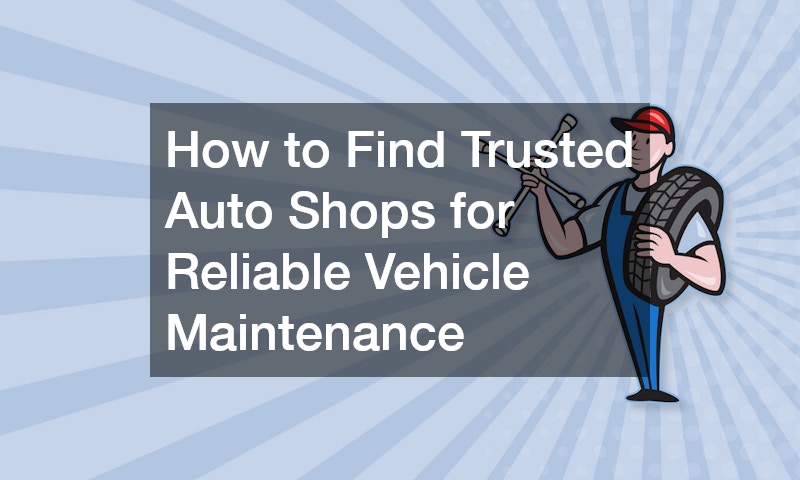Owning a car is a significant responsibility that involves more than just driving. To ensure your vehicle operates efficiently and safely, you must undertake various essential tasks regularly. Responsible car ownership not only prolongs the lifespan of your vehicle but also minimizes the risk of unexpected breakdowns. Unfortunately, many car owners tend to overlook these tasks, leading to unnecessary expenses and sometimes dangerous situations. By implementing a proper maintenance routine, you can greatly improve your car’s performance with the help of auto repair services. This article will guide you through the crucial aspects of car care that you should never ignore, enhancing your understanding of what responsible ownership truly entails.
1. How Often Should You Check Your Car’s Oil Level?

Regularly checking your car’s oil level is a crucial step in maintaining your vehicle’s health. Ideally, you should check your oil at least once a month, or even more frequently if you drive long distances regularly. Monitoring the oil level ensures there is enough lubrication for your engine’s parts, preventing potential damage and costly repairs advised by auto repair services.
To check your oil level, park your car on a level surface and wait until the engine is cool. Use the dipstick to measure the oil level, ensuring it’s between the minimum and maximum markers. If necessary, add the recommended type and amount of oil; this preventive measure could save you from extensive engine damage.
Apart from checking the level, inspecting the oil’s color can indicate potential issues. Fresh oil should be amber-colored, while dark or gritty oil signifies that it’s time for a change. Understanding the importance of this routine can help you avoid major engine problems down the line and could positively influence your car insurance rates with auto insurance companies.
2. What is the Best Tire Maintenance Routine?
Tires are amongst the most important components of your car, and maintaining them is essential for ensuring safety and performance. Regular tire maintenance involves checking the air pressure, rotating the tires, and inspecting the tread for wear and tear. Proper tire care not only ensures a smoother ride but can also extend your tires’ lifespan, saving you money in the long-term.
Maintaining the correct tire pressure is crucial as under-inflated or over-inflated tires can affect fuel efficiency and handling. It’s recommended to check tire pressures at least once a month or before long trips. Use a reliable gauge and fill in or release air as needed for optimal performance according to guidelines from auto repair services.
Regularly rotating your tires ensures even wear, promoting extended tire life and better handling. It’s typically suggested to rotate your tires every 6,000 to 8,000 miles. Regular inspections should also include checking for cuts, punctures, and irregularities in tread wear, which can pose risks and potentially impact premiums with auto insurance companies based on your vehicle inspection report.
3. Why is Battery Care Critical for Your Car?
Your car battery is essential for starting the engine and powering electrical systems. Making sure it’s in good condition can prevent inconvenient breakdowns and costly towing company fees. Battery care involves regular checks and maintenance to ensure longevity and reliability.
It’s advisable to inspect your battery at least twice a year. Check for signs of corrosion on the terminals, which can impede the battery’s function. Cleaning corroded terminals with a mixture of baking soda and water helps maintain good electrical contact and prevents issues that might require intervention from automotive services.
You should also test the battery’s charge to ensure it’s operating efficiently. A voltmeter or a multimeter can be used for this, with an ideal reading being around 12.6 volts with the engine off. If the battery frequently requires jumps, consider replacing it, preferably before it fails completely. Regular attention to battery health is vital for dependable car performance and may be a requirement during a vehicle inspection.
4. When Should You Inspect Your Brake System?

The braking system is one of the most critical components for vehicle safety, requiring regular checks and maintenance. It’s important to inspect your brakes at least every six months, or whenever you notice unusual noises or decreased performance in braking. Neglecting brake maintenance can lead to failures that not only compromise safety but may also result in expensive repairs.
Common indicators of brake issues include squeaking noises, reduced responsiveness, and a vibrating feeling in the brake pedal. If you experience any of these symptoms, it’s imperative to have your brakes evaluated by a professional before escalations necessitate a costly tow by a towing company. Understanding the nuances of brake problems ensures your car runs safely and smoothly.
During a brake inspection, focus on examining the brake pads, rotors, and fluid. Brake pads wear out over time and need replacing to maintain braking efficiency. Rotors should be checked for warping or excessive wear, while brake fluid levels and quality should be in line with manufacturer recommendations. Regular brake inspections are a vital requirement not only for your safety but also for passing any necessary vehicle inspections.
5. How to Ensure Your Car’s Cooling System is Effective?
The cooling system in your car is essential for regulating the engine’s temperature, preventing overheating. Maintaining this system involves regular checks of the coolant levels and ensuring that there are no leaks in the system. This is essential to avoid engine overheating, which can lead to major damage and costly repairs possible through automotive services.
Regularly inspecting the radiator and coolant hoses for leaks or damages is crucial. Hoses should be firm to the touch and free from cracks. Always ensure the coolant is at the appropriate level, as specified in your car’s manual, to keep the cooling system running efficiently.
It’s recommended to flush the cooling system and replace the coolant according to your car manufacturer’s guidelines, usually every two to five years. Neglecting this component can lead to engine failure, and during inspections, any lapses can lead to elevated repair bills or problems passing vehicle inspections. Consistent and careful attention to your cooling system will prevent major issues.
6. What is the Ideal Car Wash Schedule?
Regular washing of your vehicle is more than just about appearance; it protects your car from the elements. Establishing a consistent car wash schedule helps guard against long-term damage caused by dirt, salt, and other grime. Detailing doesn’t always require professional services, but maintaining cleanliness can prevent more serious issues over time.
Experts recommend washing your car every two weeks under regular conditions. However, if you live in a high-pollution area or during winter months when roads are salted, more frequent washes could be necessary. Regular cleaning removes contaminants that can deteriorate your car’s paint and metal parts, eventually causing rust.
In between washes, using a microfiber cloth to remove bird droppings or sap is essential, as these substances can cause permanent damage if left on the surface. A careful detailing regimen preserves not only your car’s aesthetics but also its resale value, and can influence evaluations during auto collision repair assessments.
7. How Can You Maintain Your Car’s Interior?

Keeping the interior of your car in good condition is important for both comfort and value preservation. Regular cleaning and maintenance of the interior prevent unnecessary wear and tear, contributing to the overall health and longevity of the vehicle. Good interior condition can also affect evaluations for auto insurance companies during claims and assessments.
Begin by routinely removing clutter from the cabin, and give the seats and carpet a thorough vacuuming to keep dirt at bay. Utilizing fabric or leather conditioners maintains seats by preventing cracking and fading, which helps retain your car’s value during appraisals.
Cleaning the dashboard, steering wheel, and other touchpoints can prevent grime buildup, improve aesthetics, and make driving more enjoyable. Refraining from harsh chemicals when cleaning ensures no damage to surfaces, maintaining a pristine interior that avoids complaints during auto collision repairs or vehicle inspections.
8. What Should You Know About Your Car’s Lights?
Your vehicle’s lighting system is vital for safe driving, enabling you to see correctly and be seen by other drivers. Keeping the lights in excellent working condition is crucial and often requires regular checks and maintenance. Faulty lights can significantly increase the risk of accidents and might result in failed vehicle inspections.
Regularly test all the lights, including headlights, taillights, turn signals, and brake lights, ensuring they function correctly. Replace any burnt-out bulbs promptly to ensure visibility while driving, and to avoid fines or infractions from law enforcement, potentially affecting your auto insurance rates.
The lenses on your car lights may cloud or become yellow over time. Cleaning them or replacing worn components like headlight lenses can enhance visibility at night. Aligning headlights properly ensures optimal road illumination, contributing to safe driving conditions and minimizing the risk of accidents. Light maintenance is a straightforward task that also factors into checks during shock replacements and other services involving auto repair interventions.
9. Why is Regular Transmission Maintenance Important?
The transmission system in your vehicle facilitates shifting gears and generally controls the power application from the engine to the wheels. Regular maintenance ensures the system works efficiently, avoiding significant breakdowns and costly repairs. Ignoring transmission health can lead to severe issues that require specialized automotive services or the expertise of rv mechanics for larger vehicles.
Regular transmission fluid checks are necessary since the fluid acts as both a lubricant and a coolant. Inspecting the fluid level and color will reveal the health of your transmission. It’s important to stick to the manufacturer’s recommendations for fluid change intervals, typically every 30,000 to 60,000 miles.
If you notice any unusual noises during shifts or slipping gears, it is paramount to address these issues promptly. An immediate evaluation by skilled professionals could prevent extensive damage and reduce the risk of needing a complete transmission overhaul. Consistently ensuring your transmission’s smooth operation is vital for performance and may impact evaluations during a vehicle inspection handled by glass companies or other repair specialists.
10. How to Create a Vehicle Maintenance Log?

Keeping a meticulous vehicle maintenance log is a fundamental strategy in responsible car ownership. Such a log offers a transparent history of all performed tasks, enhancing your understanding of your car’s condition and aiding in future maintenance planning. It’s a tool that streamlines interactions with auto repair services by showing a complete service history. With an accessible record, technicians can quickly identify past issues, anticipate recurring maintenance needs, and recommend preventative measures that keep your vehicle running efficiently.
You can either keep a physical logbook or utilize digital applications that allow easy tracking of essential tasks such as oil changes, tire rotations, and brake inspections. Digital logs are particularly beneficial because they can store reminders, upload receipts, and sync with your mileage automatically. Documentation offers a clear record that can assist particularly when you sell the vehicle or file insurance claims with auto insurance companies. Many insurers appreciate detailed service histories because they demonstrate a proactive approach to vehicle care, which can sometimes support claim verification or reduce concerns about preexisting damage.
A comprehensive maintenance log includes services performed, dates, mileage, service provider, and costs, providing an overview of all activities related to your vehicle. It may also include notes about unusual noises, dashboard warnings, or performance changes that occurred between appointments. Keeping this organized not only optimizes your care routine but also adds to your car’s resale value. Having an impeccable service record can persuade potential buyers about your car’s well-maintained status. Buyers often place a higher level of trust in vehicles with documented maintenance, viewing them as safer, more reliable, and less likely to need immediate repairs, which ultimately strengthens your negotiating power.
Taking responsibility for your car extends beyond regular drives and fills at the gas station. Fundamental tasks and maintenance routines are imperative for ensuring your vehicle’s safety, efficiency, and longevity. Every section of this article outlines essential checks, repairs, and practices, emphasizing the need for regular attention to your car’s various systems. By diligently adhering to these routines and making use of resources like professional auto repair services and auto insurance companies, you can save money, enhance safety, and positively impact your vehicle’s value. Commit to these responsible car ownership practices, and you’ll ensure a reliable, long-lasting ride.


